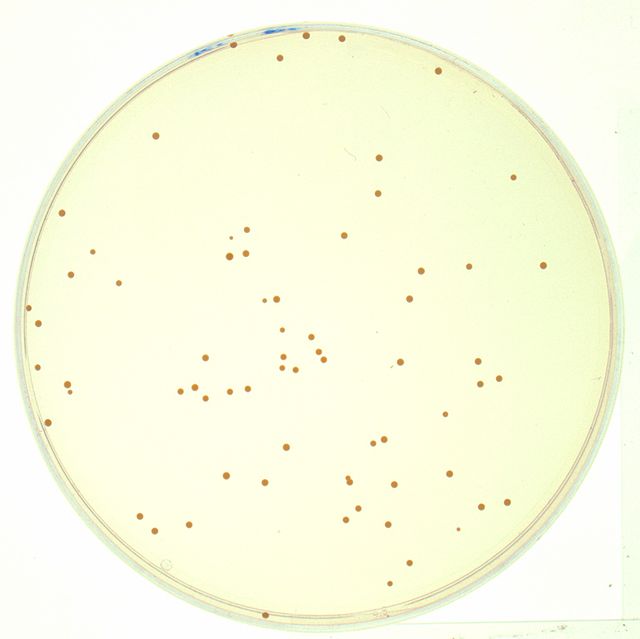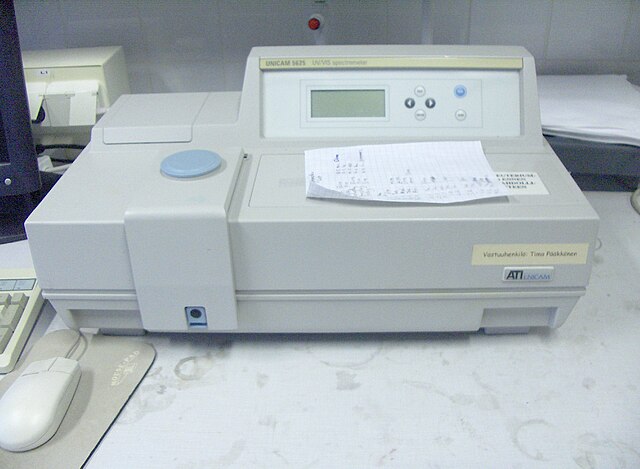Cytometry is the measurement of number and characteristics of cells. Variables that can be measured by cytometric methods include cell size, cell count, cell morphology, cell cycle phase, DNA content, and the existence or absence of specific proteins on the cell surface or in the cytoplasm. Cytometry is used to characterize and count blood cells in common blood tests such as the complete blood count. In a similar fashion, cytometry is also used in cell biology research and in medical diagnostics to characterize cells in a wide range of applications associated with diseases such as cancer and AIDS.
Cytometers are the instruments which count the blood cells in the common blood test.
A hemocytometer
Model A Coulter Counter — The first commercial flow cytometer
Cell counting is any of various methods for the counting or similar quantification of cells in the life sciences, including medical diagnosis and treatment. It is an important subset of cytometry, with applications in research and clinical practice. For example, the complete blood count can help a physician to determine why a patient feels unwell and what to do to help. Cell counts within liquid media are usually expressed as a number of cells per unit of volume, thus expressing a concentration.
A counting chamber
A picture of Staphylococcus aureus colonies growing on an agar plate (photographed in transmitted light). Such homogeneously spread colonies are suitable for CFU enumeration.
The electrode of a Coulter counter
A spectrophotometer







